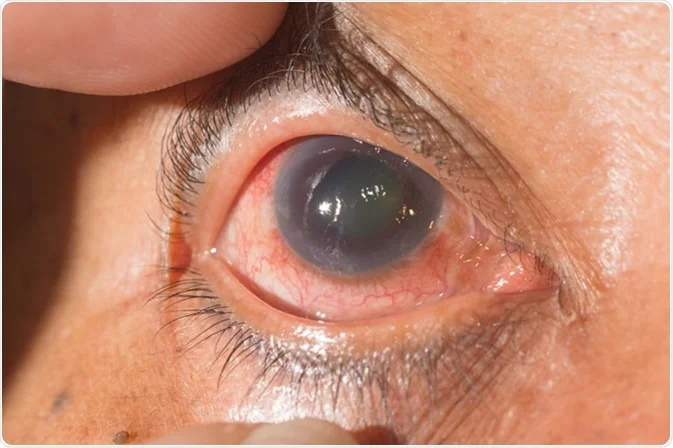One of the leading causes of blindness globally, especially in developing countries, is glaucoma. In 2020, glaucoma was the cause of blindness in 3.61 million people, representing 8.4% of all blindness cases. In addition, it caused moderate and severe vision impairment in about 4.14 million people, which is 1.4% of all moderate and severe vision impairment cases.
According to the World Health Organisation, the global prevalence of glaucoma is estimated to be 3.54%. This translates to approximately 80 million people worldwide living with glaucoma. The number is expected to increase to 111.8 million by 2040. And the highest prevalence is in Africa, with a higher percentage of the population aged 40-80 years affected by primary open-angle glaucoma.
Now, glaucoma is a group of eye diseases that damage the optic nerve, which carries visual information from the eye to the brain. This damage is often caused by increased pressure inside the eye, known as intraocular pressure.
Glaucoma is often chronic and progressive, meaning it worsens over time if left untreated. Damage to the optic nerve can lead to gradual vision loss, potentially progressing to blindness if not managed effectively. While there is no cure for glaucoma, early diagnosis and treatment can often slow down the progression of vision loss and help protect vision.
Four types of glaucoma are easily identifiable: open-angle glaucoma, angle-closure glaucoma, congenital glaucoma, and secondary glaucoma. Open-angle glaucoma is the most common type and is characterised by slow, gradual vision loss.
Angle-closure glaucoma is less common, but can cause sudden and severe vision loss if not treated promptly. Congenital glaucoma is present at birth, often due to abnormal eye development. And secondary glaucoma develops as a result of another underlying condition, such as diabetes or a tumour.
High pressure in the eye is the biggest risk for developing glaucoma. The risk of developing glaucoma increases with age, starting after 40, and more significantly after 60. Having a family history of glaucoma also increases your chances of having it. Certain genes have similarly been identified that can increase the risk of developing glaucoma.
In addition, underlying medical conditions like diabetes, high blood pressure, and certain eye diseases can raise the risk of glaucoma. Previous eye injuries or certain types of eye surgery can sometimes lead to glaucoma. Long-term use of corticosteroids, especially as eye drops, can likewise increase the risk of secondary glaucoma.
Having thinner-than-normal corneas can also increase the risk of developing glaucoma. Certain eye conditions like pigmentary dispersion syndrome or uveitis can equally contribute to glaucoma. And Black, Hispanic, and Asian people may have a higher risk of developing glaucoma.
In Nigeria, approximately 5% of the population is said to have glaucoma, and around 0.7% of blindness in the country is attributed to the disease. A significant portion of glaucoma cases in Nigeria are primary open-angle glaucoma. Sadly, a substantial number of persons with glaucoma in the country are either undiagnosed or untreated.
The truth is that various factors contribute to the low utilisation of available resources for glaucoma detection and treatment in Nigeria. Many people are unaware of glaucoma or its symptoms, leading to delayed diagnosis and treatment. Limited education and communication about the disease further worsen the problem.
Also, the high cost of glaucoma treatment, including surgery and medication, can be a major barrier for many Nigerians. Even with public funding initiatives, the coverage and accessibility of these schemes are often limited.
Additionally, Nigeria faces a shortage of specialised eye care professionals and facilities, particularly in rural areas. Lack of proper equipment and diagnostic tools in many hospitals further limits the capacity to diagnose and manage glaucoma effectively.
Furthermore, long distances to hospitals and clinics, especially in rural areas, can be a deterrent for patients seeking care. Difficult transportation and lack of readily available public transport in some areas can also hinder access to services.
Low education levels, unemployment, and gender disparities can limit access to information and healthcare resources. Poverty can equally lead to a lack of resources for healthcare, making it difficult to seek and adhere to treatment plans.
Poor patient compliance with medication regimens and follow-up appointments can undermine the effectiveness of treatment. In addition, lack of social support and understanding of the disease can also contribute to non-adherence.
Studies have shown that some patients may refuse glaucoma surgery, even when it is the recommended treatment, due to a variety of factors. Concerns about the risks and potential complications of surgery, as well as a lack of understanding of the benefits, often contribute to this reluctance.
Now, glaucoma usually progresses without noticeable symptoms in the early stages, making regular eye examinations crucial for early detection. It is recommended that people at higher risk should get comprehensive dilated eye examinations every 1 to 2 years. If glaucoma is detected early, treatment can help control the disease and prevent further vision loss.
Acute angle-closure glaucoma, on the other hand, is a medical emergency that requires immediate treatment to prevent blindness. Its symptoms include sudden, severe eye pain, headache, nausea, and blurred vision. Anyone experiencing these symptoms should therefore seek medical care without delay.
Maintaining a healthy lifestyle, including a balanced diet, regular exercise, and not smoking, can help reduce the risk of developing certain conditions that can contribute to glaucoma. And if you have a family history of glaucoma or are at higher risk, you need to talk to your doctor about your risk factors and how often you should get checked.
Ultimately, everyone needs to be aware of the importance of eye health and seek medical care when necessary. And this is the time to contact your doctor or ophthalmologist if you have concerns about your vision as any further delay may lead to serious, avoidable consequences.
Ojenagbon, a health communication expert and certified management trainer and consultant, lives in Lagos.






